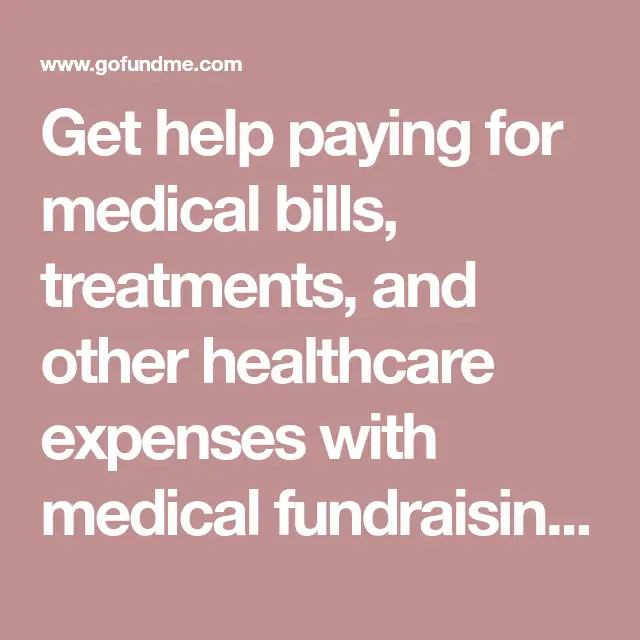Live Your Best Life Colorado Weve Got You Covered
Apply for savings
- your familys estimated annual income.
You can use the financial help in two different ways:
If you take the financial help in advance, the amount of the tax credit you use should be based on your estimated gross income for the year youre getting coverage, not last years income.
Choosing A Health Insurance Plan
Reading the fine print is important when choosing health care plans. These questions may help:
- Can I go to any doctor, hospital, clinic, or pharmacy I choose?
- Are specialists, such as eye doctors and dentists covered?
- Does the plan cover special conditions or treatments such as pregnancy, psychiatric care, and physical therapy?
- Does the plan cover home care or nursing home care?
- Will the plan cover all medications my physician may prescribe?
- What are the deductibles? This is the amount you must pay each year before your insurance company will begin paying claims.
- Are there any co-payments? This is the amount of money you pay each time you receive medical services or a prescription.
- If there is a dispute about a bill or service, how is it handled?
Are You Eligible For Health Insurance Subsidy
Depending on your household size and income, you may qualify for this assistance.
- People age 18 and older, even students, who file their own federal taxes, may be able to get both types of aid.
- People who dont have a job and don’t have COBRA coverage may also be able to get one or both types of aid.
- Native Americans and Alaskan natives may also be able to get help with their Marketplace or Tribal health plan.
Also Check: How To Cancel Anthem Health Insurance
Do You Need Supplementary Health Or Dental Insurance
If you are young and healthy, you might not need to buy supplementary health or dental coverage. It depends to an extent on what you are covered for under OHIP, a group plan or a parents group plan. For example, starting in January 2018, OHIP provides prescription drug coverage to youth 24 and under who are not covered by private benefits. Those children and youth are able to get more than 4,400 prescription medicines for free by showing their health card and prescription. Coverage is automatic, with no up-front costs. Read the news release to find out more. Check what you are covered for, take a look at your individual situation, and make a decision on whether what you have now is sufficient.
Supplementary Health And Dental Insurance Faqs

Follow us
Read Also: How Much Family Health Insurance Cost
How Does It Work
Supplementary health and dental insurance policies are contracts between you and an insurance company. You agree to pay a yearly or monthly fee called a premium, and the company agrees to pay the benefits which are covered under your policy. Your policy will outline what is included and what is not.
Here are some common features of supplementary health and dental insurance:
- Most policies do not cover 100 per cent of your medical expenses. You may have to pay some of the medical expenses you and your dependants incur. This is known as the deductible. Each policy is structured differently and you might have family deductibles or per service deductibles .
- Some plans have a co-insurance feature in addition to the deductible. That means you have to pay a percentage, or co-insure, the medical expenses on top of your deductible. It could be 10 per cent of the eligible medical expense, or higher, and it may depend on the type of medical service required.
- You may also have dollar or percentage limits, or maximums placed on the amount of benefits that you can receive. Maximums can apply to specific health benefits like eyeglasses or massage therapy sessions in a specified period typically a year, or during your lifetime.
Support For Youth Previously In Foster Care
If you are a young adult who is currently or was previously in Virginias foster care system, you may be eligible for financial assistance to help with education and training expenses. VisitFosterMyFuture.com to learn more about theEducation and Training Voucher Program and other opportunities for leadership, social connectedness, and advocacy.
Don’t Miss: Will I Get Money Back From Health Insurance
Whats A Premium Tax Credit How Does It Work
Premium tax credits are offered through the Health Insurance Marketplace. They are in place to:
- Reduce monthly payments, or premiums, paid to your insurance plan
- Cap the amount an individual or family must pay for health insurance
The size of the premium tax credit is based on a sliding scale. That means people who have a lower income will get a larger credit. Thats to help cover the cost of their insurance.2 The credit is sent directly to your insurance company.
What Other State Programs Can Help
Medicare Savings Programs in certain states may pay Medicare premiums, deductibles, and coinsurance if a person has a low income and few assets. Learn more online.
State Health Insurance Assistance Programs give advice about health insurance in every state to people who have Medicare. SHIP counselors can help you choose the best plan for your needs. Find a SHIP counselor at ShiptaCenter.org or call 1-877-839-2675.
-
Phone: 1-800-872-5827 or 202-776-0406
Read Also: Is Dental Insurance Health Insurance
What Is Supplementary Health And Dental Insurance
If you live in Ontario, you are probably covered under the government-funded Ontario Health Insurance Plan . When you are approved for OHIP, youll get an Ontario health card which enables you to go to a doctor, clinic, hospital or emergency room, and receive medical attention, tests and surgeries at no cost to you.
But OHIP only partially covers or doesnt cover some medical services like prescription drugs and vision care, and it does not cover dental care. To pay for medical needs and dental care that OHIP doesnt cover, you may want to consider purchasing supplementary health insurance also known as extended health insurance, or private health insurance, and supplementary dental insurance.
You might have supplementary health and dental insurance through your employer, known as group insurance, or you may decide to buy your own policies, known as individual insurance. Supplementary health and dental insurance is a way to get the medical services you need, at an affordable price. To find out more about the different types of supplementary health and dental insurance, visit Types of Supplementary Health and Dental Insurance.
What Ohip Covers And What It Doesnt
Before you can decide whether or not you need supplementary health and dental insurance, you should have an idea about the kinds of services OHIP does and doesnt pay for. The basic expenses covered by OHIP include:
- Visits to doctors
For a full list visit What OHIP Covers.
What OHIP doesnt typically cover:
- Prescription drugs/medicines provided outside of hospitals such as antibiotics, painkillers, and some cancer drugs
- Specified elective medical services such as chiropractors or massage therapists
- Semi-private or private hospital rooms
- Some medical exams, tests and vaccinations
You May Like: How To Get Health Insurance Outside Of Open Enrollment
Fcc Emergency Broadband Benefit Program
The Federal Communications Commission has announced that the $3.2 billion Emergency Broadband Benefit Program has launched. The program will provide a $50/month subsidy for the cost of internet service for select individuals for six months. A list of Virginia’s participating broadband providers can be found here. Eligible households can sign up for the program directly through their broadband provider or online. For more information and to sign up, visit Get Emergency Broadband.
The National Association Of Free & Charitable Clinics

You can use the National Association of Free & Charitable Clinics website to search for health clinics and pharmacies in your area that offer free or low cost services.
The association is dedicated to caring for people who are uninsured or underinsured. There are more than 1,400 clinics and pharmacies in the association.
If you need assistance paying for care, you have a handful of options:
Read Also: How Much Does Average Health Insurance Cost Per Month
A Simple Breakdown Of Health Insurance Plans In Ontario
In Ontario, one-third of employees don’t get dental and medical benefits through their employer.
And while Ontarians are covered for many medical costs by the government-funded insurance plan, there is still a big, expensive gap.
Read on to learn all about personal health insurance plans in Ontario so you can make an educated choice for your family.
Types Of Health Insurance Plans
When purchasing health insurance, your choices typically fall into one of three categories:
- Traditional fee-for-service health insurance plans are usually the most expensive choice. They offer the most flexibility in choosing health care providers.
- Health maintenance organizations offer lower co-payments and cover the costs of more preventive care. Your choice of health care providers is limited to those who are part of the plan.
- Preferred provider organizations offer lower co-payments like HMOs but give you more options when selecting a provider.
You May Like: How To Get Your Own Health Insurance
What Will Make Me Ineligible For A Health Insurance Subsidy
You will not be eligible for a health insurance subsidy if you can get affordable health insurance in other ways. For example, if you can get affordable health insurance through your job, but you prefer to purchase a health plan through your health insurance exchange, you are not eligible for a subsidy.
The law makes an exception to this if the health insurance offered by your employer is of poor quality or if the coverage is not available:
- The Affordable Care Act defines affordability as health insurance that will cost you less than 9.83% of your income in 2021.
- If the health insurance available through your job doesn’t provide a minimum cost , that doesn’t invalidate your eligibility for a subsidy just because it’s available. For a plan to offer the lowest cost, it must pay an average of 60% of covered costs and include “substantial” coverage for medical and inpatient care.
However, if you choose to enroll in an employer-offered health insurance program, even if it is not available or does not provide a minimum cost, you will not be eligible for a subsidy as long as you are enrolled in an employer’s health plan. The government will not help you pay for health insurance if you already have health insurance at your workplace.
You are not eligible for a subsidy if you are registered for government sponsored health insurance such as the Children’s Health Insurance Program, the Office of Veterans Affairs, etc. Medicaid or Medicare
Premium Tax Credits Lower Your Health Care Premiums
Premium tax credits lower the amount you pay monthly for your health care plan. If you qualify, you have two choices for the way you use this aid. After you sign up for your qualified health plan, you can have the federal government pay the tax credit right to the insurance carrier each month. This lowers the monthly premium amount you pay. Your other choice is to get a tax credit when you file your federal income taxes. This means you pay the full amount of your insurance premium each month. Then, you get the total credit after you file your taxes. You can use the premium tax credit toward any qualified health plan on the Marketplace.
Also Check: How To Find Health Insurance In Colorado
How Much Supplementary Health Or Dental Insurance Do You Need
There are a wide variety of supplementary health and dental insurance plans, each with their own level of coverage, but the amount of health insurance you need is a highly personal decision. Only you can decide how much is right for you, but an insurance agent or company may be able to help you make those decisions. Visit the finding an insurance agent or company section of Working With an Insurance Agent or Company to find someone who can help you.
Factors to consider when deciding how much coverage you need include:
- How much can you afford to pay each month? Each year?
- Do you have any other supplementary health insurance through your employer, a parents group plan or a spouse/partner?
- Do you require prescription drugs on an ongoing basis?
- Are you willing to share a hospital room, or do you prefer a private room?
- Do you wear glasses or contact lenses?
- Do you receive medical services from professionals such as chiropractors or massage therapists?
- Can you afford to pay out of pocket for ambulance fees?
- Do you have a chronic illness that requires more extensive medical services than OHIP provides?
- Do you have a pre-existing medical condition? Some supplementary health insurance plans do not cover this. Be sure to shop around to find an insurer who might.
Supplementary Health and Dental Insurance | 101: Getting Started 4
What Kind Of Financial Help Is Available
The Affordable Care Act makes it more affordable than ever to get insured, especially for people with pre-existing conditions. Medicare, Medicaid, the Childrens Health Insurance Program , tax credits, and cost-sharing tools combine to create a network of assistance for individuals and families hoping to reduce the cost of health insurance. Eligibility for these programs is based on location, age, income, and family size.
You May Like: When Is An Employee Eligible For Health Insurance
What Health Insurance Plans Cover People With Diabetes
Health insurance helps pay for medical care, including the cost of diabetes care. Your health insurance options are
- private health insurance, which includes group and individual health insurance
- government health insurance, such as Medicare, Medicaid, the Childrens Health Insurance Program , TRICARE, and veterans health care programs
Under current law, health insurance companies cant refuse to cover you or charge you more just because you have a pre-existing conditionthat is, a health problem you had before the date that new health coverage starts.
Changes to insurance rules happen often and may affect your health insurance choices. Learn more or get help with your health insurance questions through
- HealthCare.gov , the federal marketplace, 1-800-318-2596, TTY: 1-855-889-4325
- copayments and deductibles
- health care providersdo your providers participate in the plan, or will you have to change providers or pay more to see your current providers because they are out of network?
Ask for a Summary of Benefits and Coverage, which explains the plan in plain language, including free preventive services. This summary may include a coverage example for managing diabetes.
What Is The Advance Premium Tax Credit

Advance Premium Tax Credit is based on your estimated income for the year, and its paid directly to the insurance company every month to lower your premium payment amount.
Since it is only based on an estimate, however, the APTC may not be completely accurate in its estimation. When you file your taxes, any excess APTC received that you didnt need to cover premium costs must be returned. If you didnt receive enough, the remainder will be given to you as a refund or a reduction in taxes owed.
Also see:
Don’t Miss: How The Fuck Do I Get Health Insurance
Financial Aid Through The Exchange
If you buy a health plan through the Exchange, you may qualify for financial assistance that would lower your plan’s premiums and out-of-pocket costs.
The premium tax credit is based on income estimates and household information. Income between 100% and 400% of the Federal Poverty Level qualifies for lower premiums with the premium tax credit.
The American Rescue Plan Act of 2021 expanded the existing premium tax credit program so more people qualify for financial assistance when enrolling in a health plan through the Exchange.
Annual income relative to the Federal Poverty Level|
Household size |
|---|
Can I Qualify For Help Paying For Health Insurance
Eligibility for a health insurance subsidy depends on your federal poverty income. The amount of poverty in federal dollars changes each year and depends on the number of people in your household. As explained here , the exchange will use the poverty figures from the previous year to determine your eligibility for the subsidy .
The lowest threshold of eligibility for premium subsidies is household income equal to 100% of the poverty rate in states that did not expand Medicaid, and more than 138% of the poverty rate in states that expanded Medicaid . ). In states that have expanded Medicaid, adults under 65 are eligible for Medicaid if their income does not exceed 138% of the poverty line. To cover 2021, the 100% poverty rate for a single person in the Continental US is $ 12,760.
Generally, there is an upper threshold for eligibility for the premium subsidy, which is 400% of the poverty line. But the American Rescue Plan eliminated that for 2021 and 2022. Depending on how much a person has to pay for a control plan, subsidies may be available for income well above 400% of the poverty line. Consumer advocates have called on Congress to extend the subsidy provisions in the American Rescue Plan, but if that doesn’t happen, there will again be a 400% subsidy cut from the poverty line starting in 2023.
You May Like: How To Find Health Insurance
